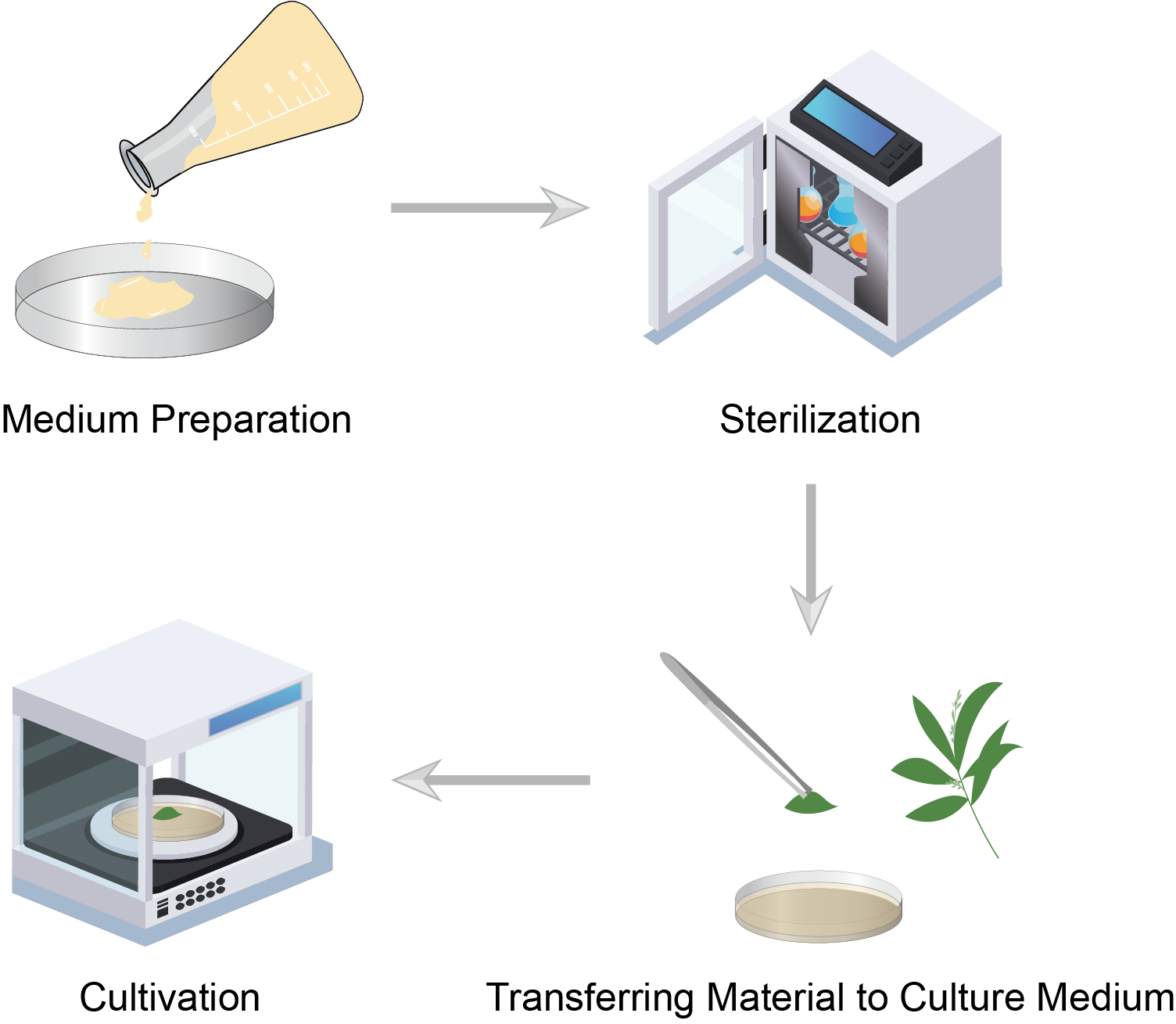Tissue Culture Protocol & Troubleshooting
Tissue culture is a biological research method in which plant cells, tissues or organs are cultured on specially formulated nutrient media. This technique transfers tissue fragments from animals or plants into an artificial environment where they can continue to survive and function. Due to its wide range of applications, tissue culture is very important in biology.
Both plant and animal tissues can be used in culture. Creative Biolabs offers our clients the service of tissue culture according to optimized protocols. We use animal tissue culture to help preserve organs or tissues, and we use plant tissue culture for genetic modification or other functions in plants.
Solutions and Reagents
| Stages | Solutions and Reagents |
| Preparation | Culture medium, tissue materials, antibiotic, distilled water, and washing buffer |
Tissue Culture Procedure
 Figure 1: Tissue Culture Procedure.
Figure 1: Tissue Culture Procedure.
The medium used for culture can be broth or agar. There are two options for preparing the medium. One is to purchase all the chemicals in the culture medium and prepare it yourself as needed. The second is to purchase a commercially well-mixed medium. The exact amount used here will depend on the amount of tissue to be cultured. Heat and stir to dissolve, then pour the warm medium into the tube. Cover and place the tube in a pressure cooker, and sterilize.
Sterilization is one of the most important tasks in tissue culture. After preparing the medium, all of the medium is autoclaved, along with any tools and containers that may be used.
Get the culture material ready. Cut plant or animal parts into small pieces, then sterilize and wash them. Transfer the plant material to sterile tissue culture medium on a sterile operating table. Cover tightly.
Place the culture material in the culture room and set up a suitable environment with light, temperature, and sterility to allow it to grow.
Troubleshooting
Culture contamination
- Material causes. Surface sterilization of the selected material is an essential step in tissue culture. Microbial contamination of material removed from the external environment will result in tissue death. We recommend using fungicides, bleach, antibiotics and other chemicals for surface sterilization.
- Culture media and vessel causes. The most important step in the tissue culture technique is sterilization. Contamination can occur due to improper sterilization of glassware and vessels. Culture media should be autoclaved at 121°C for 15 minutes to kill microorganisms on the culture vessel.
- Environment causes. The laboratory must be maintained in a sterile state and in a good environment, which is the root cause of contamination. The design of the laboratory should facilitate the reduction of sources and opportunities for contamination.
Poor tissue growth
- Material causes. The selection of material is the first step in tissue culture. The material to be transplanted should be from a healthy mother plant. And the possibility of better growth depends on the location and age of the material. Therefore, we recommend preparing healthy and well-conditioned material.
- Culture medium causes. The success of tissue culture depends on the choice of medium. The medium needs to be of the right pH and properly maintained for nutrition.
The information given above lists some potential problems and provides possible solutions that can help you troubleshoot your tissue culture experiments. If you need more related services and information, please contact us.
For research use only. Not intended for any clinical use.
This site is protected by reCAPTCHA and the Google Privacy Policy and Terms of Service apply.



